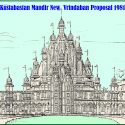1981 New Vrindaban Kustabastan Mandir
c/o mayevara dasa Feb. 2024 (mdjagdasa@gmail.com)
In order to effectively manage ISKCON, Srila Prabhupada divided the world into several Zones. This was the model that the GBC used immediately after he departed and that led to Kirtananada (Keith Ham) being assigned to act as the GBC/Acharya for what was then called Bombay. I had been sent there to build what turned out to be the largest Rathayatra cart ever built in ISKCON.
Kirtananda had said he wanted to build a huge temple in New Vrindaban which inspired me to design what I envisioned he should build based on what he had said he wanted.
The following drawings were what I eventually proposed for the New Vrindaban community which at that time was recognized as the biggest tourist attraction in the entire state of West Virginia.
Dwg-1 Ground Floor Plan – (Click on drawing to enlarge.)
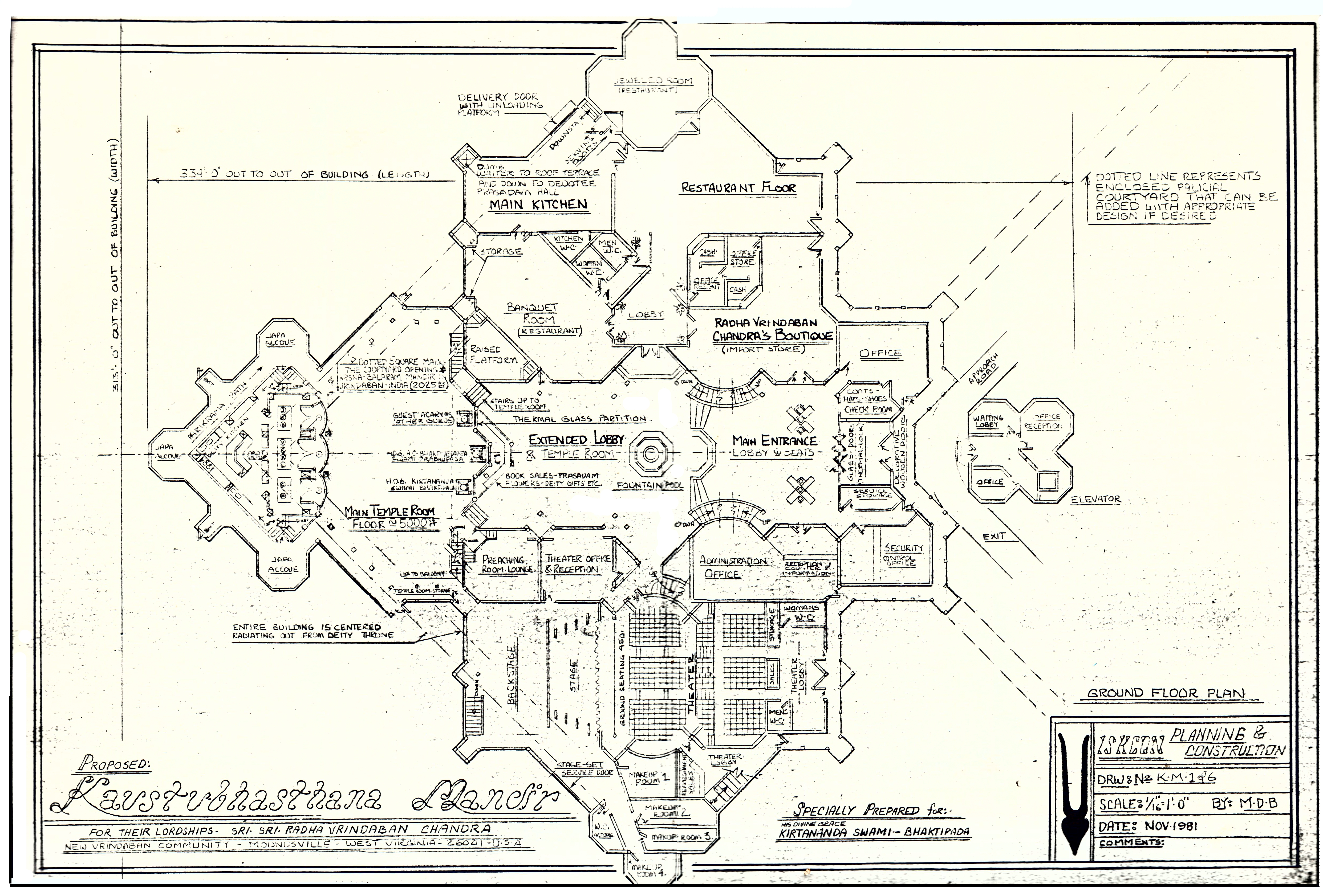
The ground floor opened up with a grand entrance and beautiful altar for the deities and a large temple room that accommodated three Vyasasanas for Srila Prabhupada to sit and visiting guest speakers. It also housed a 800 seat theater a Gift store, banquet room and administrative offices.
Dwg-2 First Floor Plan – (Click on drawing to enlarge.)

The first floor was very open to allow for high ceilings and elevated viewing of the deities. It also provided adequate space to house a museum dedicated to portraying how ISKCON began as well as a library. Passages around the deities allowed for pilgrims to circumambulate the entire temple room from the first floor.
Dwg-3 Roof Terrace Plan – (Click on drawing to enlarge.)
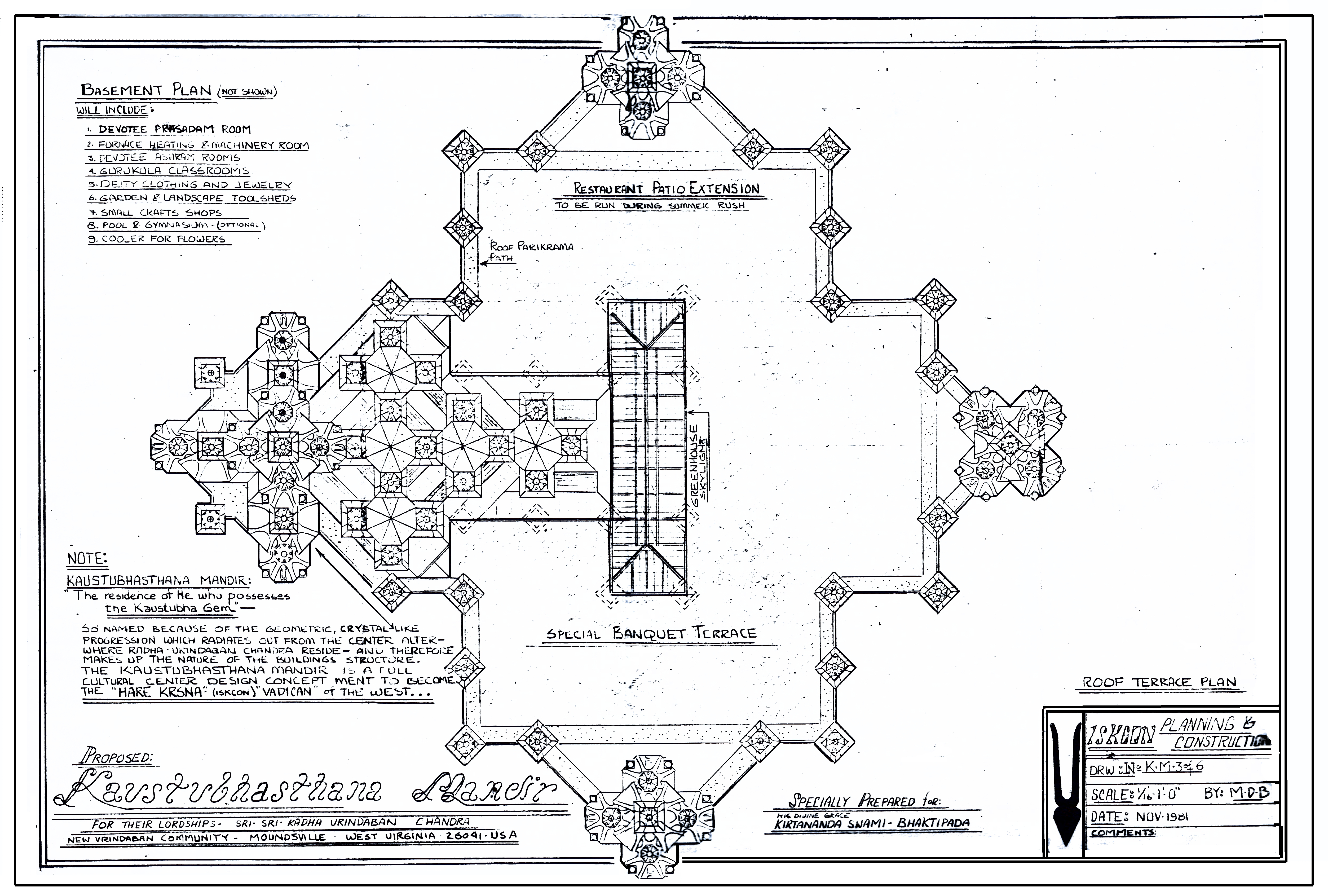
The roof terrace provides space for banquets and padio eating. It also provides a lot of glass skylights and stained glass windows to illuminate the lower templeroom.
Dwg-4 Side Elevation View (Click on drawing to enlarge.)
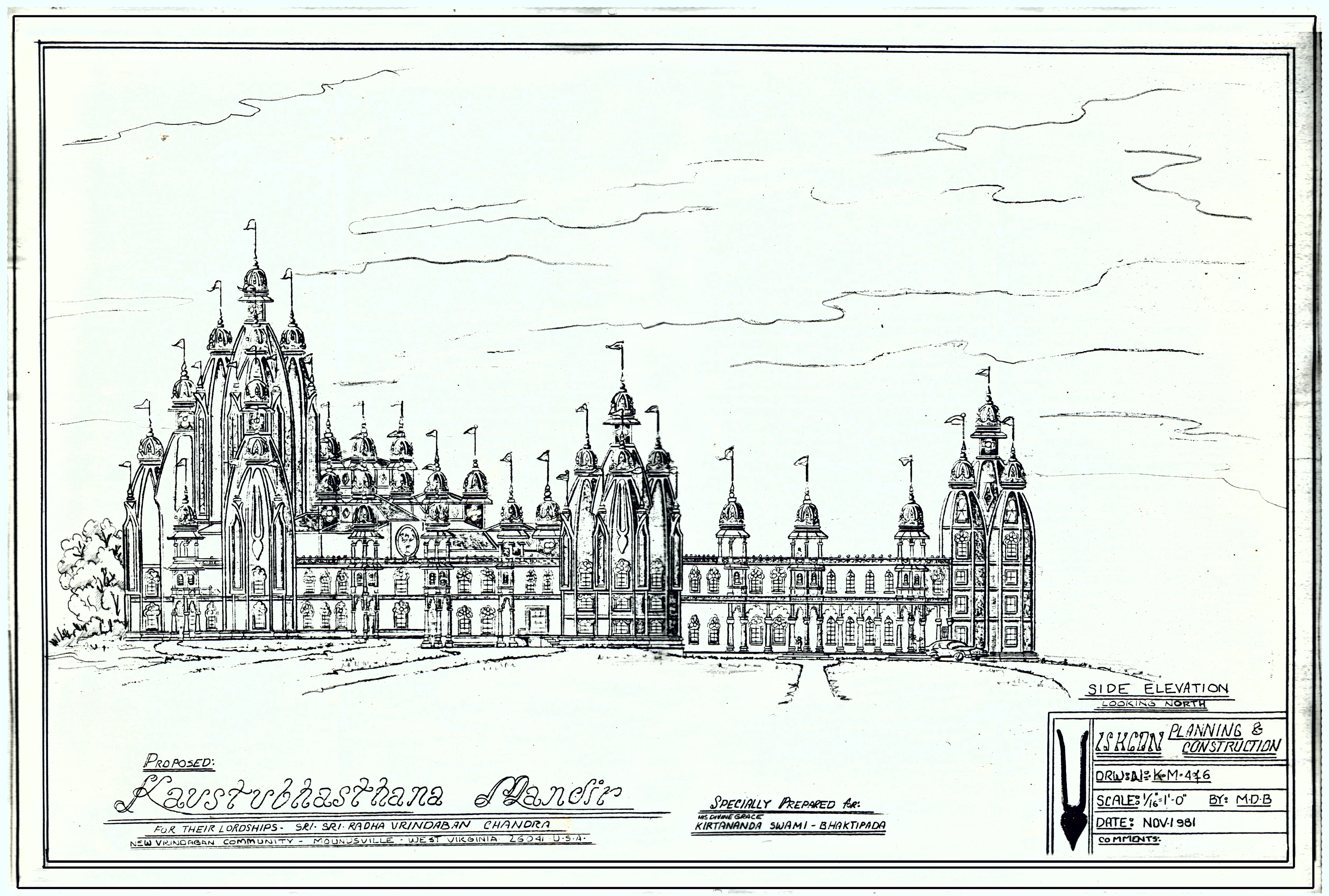
The side elevation shows how majestic the Kaustabasthana Mandir would look from the outside. It is modeled after the traditional Bengali temple style with beautiful arches, panicles and minarets.
Dwg-5 Side Sectional View (Click on drawing to enlarge.)
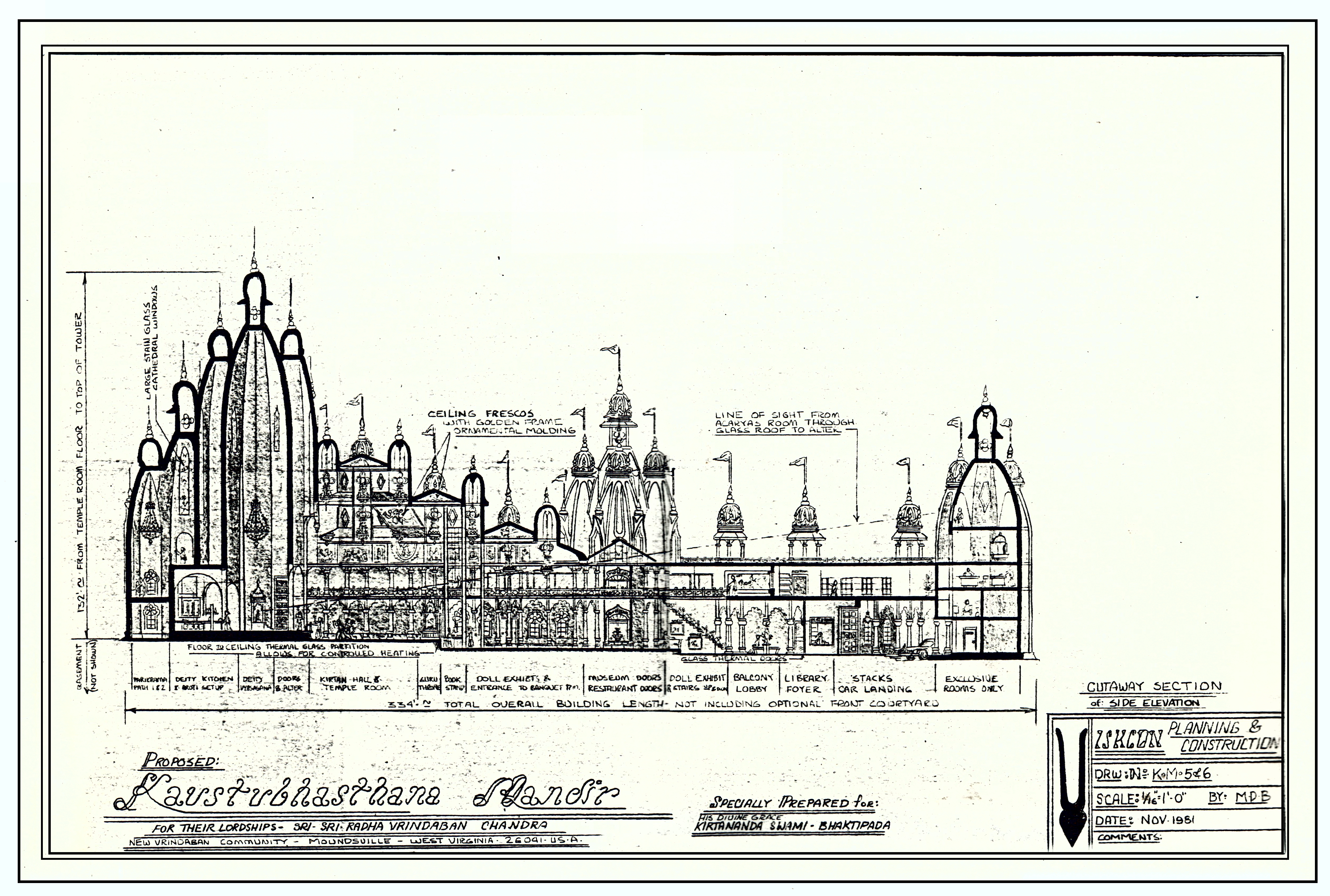
This side sectional view provides a good look at how the three floors inside of the temple work together. It also gives a clear understanding of how the ground floor progressively goes up between the front door and the altar located way inside the entire building. One can see how the stain gass windows stragatically placed in the towers located over the deities would illuminate the sacred temple hall and alter with whisps of beautiful color.
Dwg-6 Front Elevation (Click on drawing to enlarge.)
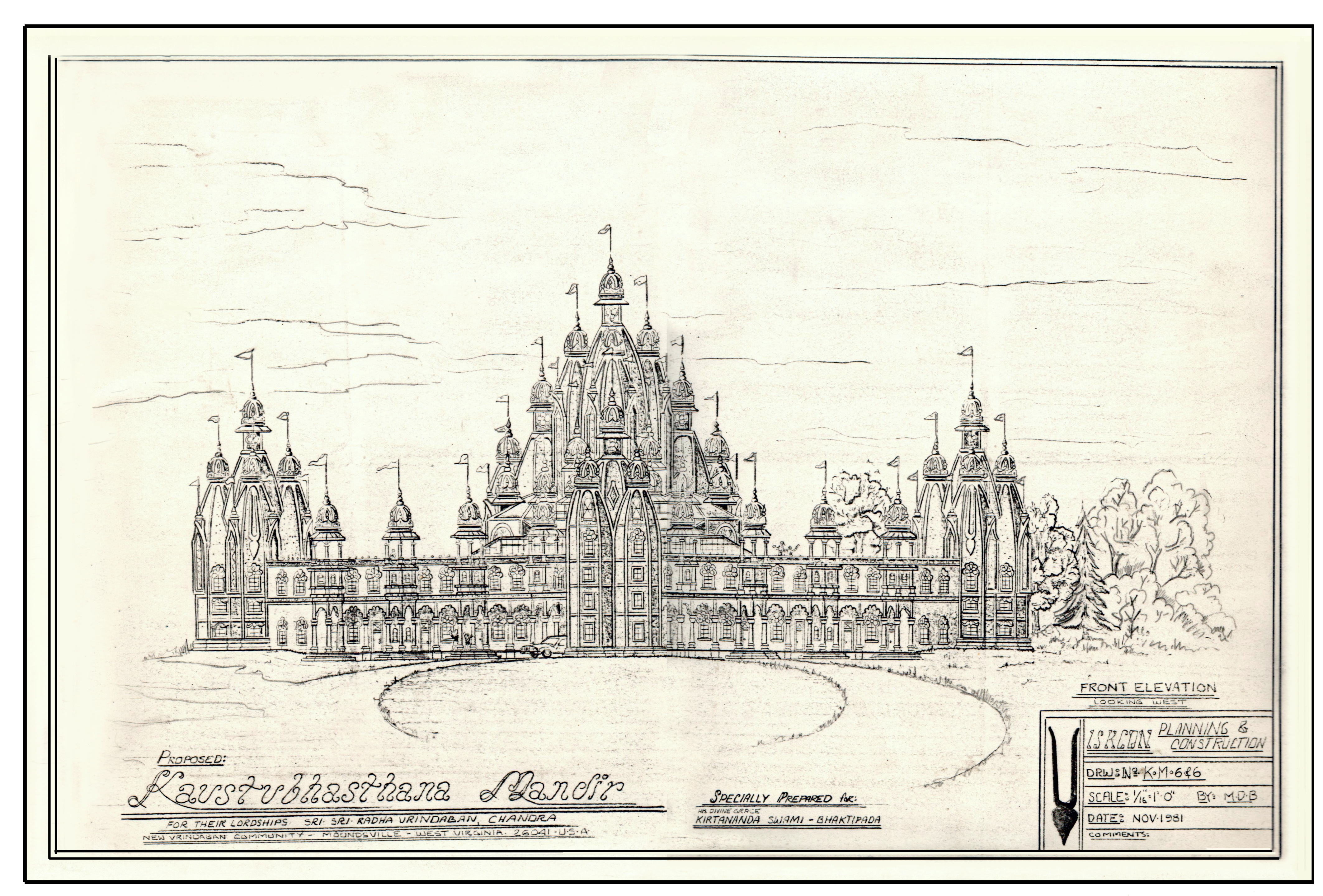
The last drawing shows the front elevation of the mandir and how all the towers compliment each other is a dramatic sweeping way that culminates over the top of the deities. Had this been built, it would have become a landmark structure advertising Lord Caitanas Sanikrtan movement and the miracle Srila Prabhupada performed bringing that message to the Western World!

